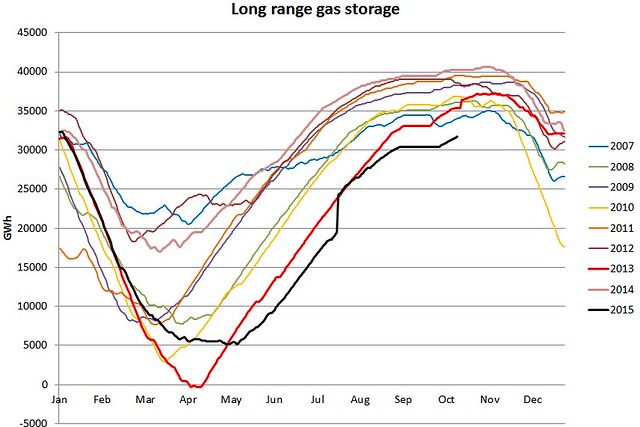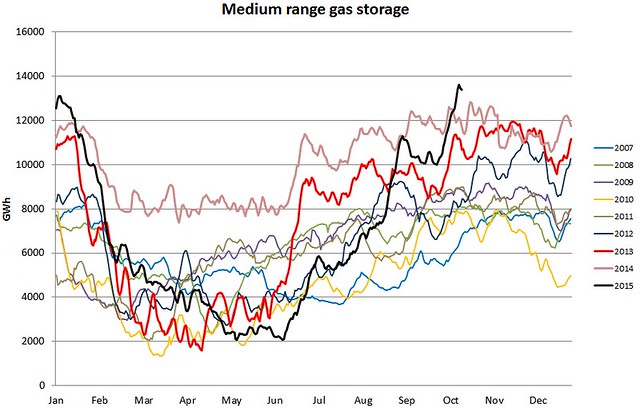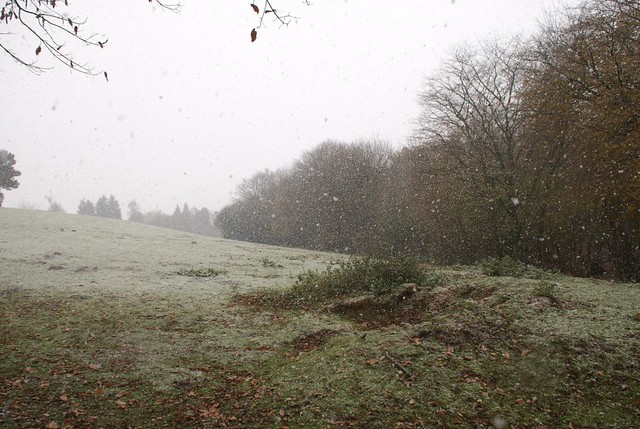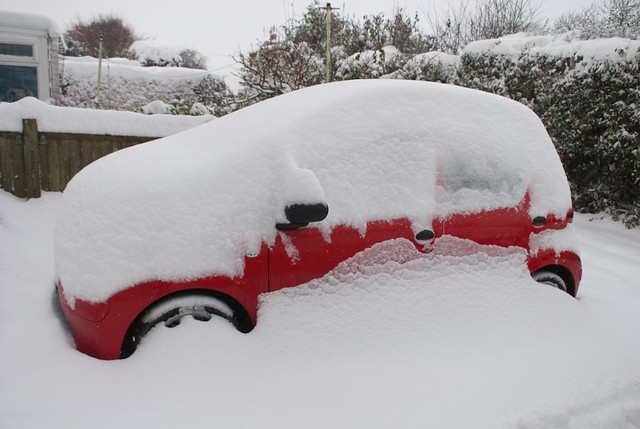It was back in April that I blogged about the cut Centrica had made in the capacity at Rough, due to problems with some of the wells limiting the maximum operating pressure. At the time, Centrica hoped that by now the capacity would have been restored, but a press release in July said that they now didn't expect to know if this would be possible until some time between September and December 2016! The net result is that the capacity of Rough has been reduced by 25%.
Clearly this presents a problem for UK winter gas supply, so it's not surprising that another July press release stated that the Oil and Gas Authority had given Centrica permission to reduce the minimum operating pressure of Rough, thus 'converting' some of the cushion gas (which would normally be left in the store) into working gas, which can be withdrawn and re-injected. This shows up on the chart below (black line = 2015), where a sudden jump up in July can be seen, due to the addition of about 4,625 GWh (or about 400 mcm). The same trick was pulled in 2013 (red line in chart below), after dipping into the cushion gas in April 2013, capacity was increased arbitrarily in the October 2013. It's a bit like keeping driving your car after the fuel gauge has gone into the red - it works OK for a while, but you can't do it for long...
Despite this bit of creative accounting, the chart below shows that we are still going into this winter with a record low amount of gas in storage, and National Grid's Winter Outlook notes this on page 43, saying storage is reduced by 14%, from 4.9 bcm to 4.2 bcm. It would have been 22% less if Centrica hadn't fiddled the figures by dipping even further into the cushion gas.
Medium range storage is looking better, with increased capacity and a record amount in storage, but nowhere near enough to make up for the shortfall at Rough.
So, the big question has to be about demand. We have fewer coal power stations than we did a year ago (which is a good thing, of course!), which could in theory mean that more gas gets burned to generate electricity. But the big factor will be the weather as always, which is hard to predict at this stage, as there are several extra factors to bear in mind:
- El Nino is in full swing, but it's not clear whether that will make much difference in the UK.
- We're heading towards the low point of an already anaemic 11-year solar cycle, which can lead to colder weather in Europe, and some scientists are suggesting that lower solar activity could be a theme for several decades. The Met Office has commented on this too.
- There's a persistent area of unusually cold water in the North Atlantic, which has the potential to affect the UK this winter, and could even be a sign of slowing ocean currents, which could spell cooler weather for many years for the UK and NW Europe.
or like this:
Click here to read the rest of this post.



